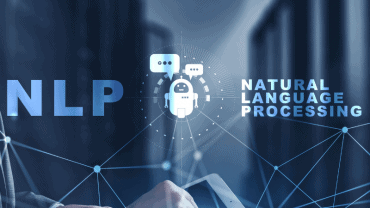
As BI applications embrace Gen AI, the clarion call for providing them with well-defined data becomes even more pertinent. With a robust semantic layer that enriches the raw data into a consumable structure, the full power of AI and NLP can be leveraged.
An exponential growth in data volumes is a well-known fact, but what is more intriguing for data engineers is that unstructured data is growing more rapidly than structured or semi-structured data. Multiple analyst estimates indicate the volume of unstructured data now outstrips that of structured information and is growing at a much faster rate, too. This consists of documents, e-mails, video and audio files, call transcripts, meeting notes, and an ever-growing mountain of social media posts.
With no form, structure, or definitions in place, it is extremely difficult to subject this data to systematized analytics. Organizations thus fail to capture and leverage the intelligence and insights available in the bulk of their data, which is a huge opportunity loss. Self-service analytics that enable business leaders to create reports and insights that line up with the ever-changing business environment and help them dig deeper becomes nearly impossible without well-defined and structured data.
This, however, is subject to change with the advent of AI. The future of BI and analytics is generative BI (Gen BI) – a combination of generative AI and BI tools.
What is Gen BI?
This is an emerging approach to BI that empowers stakeholders to leverage their data assets without the need for technical expertise or a dependency on IT teams. Queries can be in natural language, such as “Which region showed the highest customer churn last month, and what were the key contributing factors?” or “What were our top-selling products in Q1, and how do they compare to last year’s sales?” Gen BI instantly processes these questions, providing immediate, context-aware, and predictive insights.
With Generative BI, users don’t need to know the underlying data structures, write SQL queries, perform complex calculations, or manually create visualizations. It offers a no-code, user-friendly interface and promotes a self-service approach to data analytics.
Gen BI makes analytics more accessible to all stakeholders, promoting a smarter data-driven culture and decision making across the organization.
See also: Beyond the Euphoria: Responsible Use of GenAI
Semantic Layer Enables Gen BI
Large language models (LLMs) bring natural language capabilities to generative BI. However, they require well-defined and meaningful data to produce accurate, consistent, and useful results.
Raw data comes from various sources, each with its own format and structure. The lack of uniformity poses a significant challenge for existing BI tools, and even more when they are AI powered (Gen BI). The lack of a standardized approach can result in inconsistent or inaccurate reports that result in poor trust in data-driven insights.
When a semantic layer is architected in between the consumption and the data layers, it acts as a centralized mechanism to standardize, govern, and implement an efficient “data to insights” pipeline. It translates user queries into structured data processing algorithms that generate clear, accurate responses. Besides enablement, a semantic layer adds several other benefits.
Firstly, a semantic layer enriches the raw data, adding business-friendly terminologies and calculations to make it accessible for business users. It insulates the business users from the technicalities of the underlying database schemas and allows them to query, visualize, and analyze data without the need for advanced IT skills. Acting as a translation layer between user-friendly business terms and complex data structures, it makes insights easy and accessible for all stakeholders. In addition, organizational data is often scattered and unstructured, making analytical results incomplete or unreliable. A semantic layer solves this by acting as a single source of truth for them.
Within large organizations, different departments prefer to use separate BI tools, most often defining business metrics in their own way. This creates confusing and divergent reports, resulting in low trust in data insights. A semantic layer standardizes business terms and harmonizes their definitions. Users can continue to use their preferred BI and visualization tool; however, since they all use data prepared by a common semantic layer, the reports are consistent.
Next, with unstructured data having no formal format and with ever-expanding volumes, query performance suffers. Response time drastically increases with complex workloads involving multiple tables, joins, and calculations. A semantic layer optimizes query execution by pre-aggregating data, indexing frequently used metrics, and caching results. This brings consistency and efficiency to analytics performance. With a smaller number of queries requiring data access at run-time, the costs are optimized as an added benefit.
Lastly, with self-service analytics and Gen BI, it is even more critical that data governance and security practices are implemented in a foolproof manner. While the advantages of Gen BI should be leveraged, access control to sensitive and confidential information must also be protected. A semantic layer is well-positioned to enforce role-based access controls(RBAC), ensuring that only authorized userssee the data they are permitted to access. This maintains transparency and control over data usage.
See also: Putting More Intelligence into Business Intelligence
Conclusion
An overwhelming amount of unstructured and unmanaged data continues to grow in organizations today. Without a clear and consistent format and schema, BI tools find it highly challenging to extract meaningful insights from them, leaving a huge opportunity on the table.
As BI applications embrace Gen AI, the clarion call for providing them with well-defined data becomes even more pertinent. With a robust semantic layer that enriches the raw data into a consumable structure, the full power of AI and NLP can be leveraged.
The use of emergent gen BI tools would see a surge of ad hoc queries in a self-service implementation that can be met with a well-designed semantic layer that accelerates query performance, maintains security controls, and supports high user concurrency- allowing businesses to harness the full potential of AI-driven insights.






























